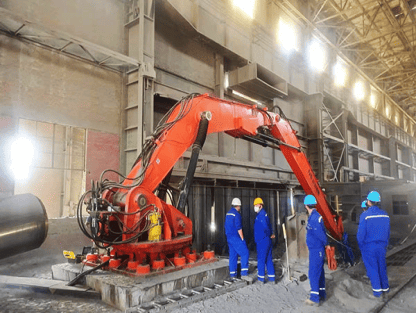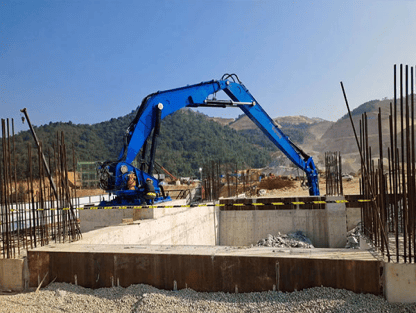Mining operations often require breaking down large, unmanageable rocks into smaller, transportable pieces. This is where Rockbreaker Boom Systems play a crucial role. These stationary machines are designed to handle oversized materials, ensuring smooth operations in crushing plants and mining sites. Additionally, they improve safety and efficiency by eliminating the need for manual labor in hazardous conditions. In this article, we’ll explore the stationary rock breaker, its related systems, and other aspects of this essential mining equipment.


A hydraulic breaker, often referred to as a hydraulic hammer, is a heavy-duty attachment for excavators, backhoes, or stationary boom systems. It uses hydraulic pressure to deliver high-impact blows to break rocks, concrete, or other hard materials. Hydraulic breakers are commonly used in construction, mining, quarrying, and demolition industries.
The core mechanism of a hydraulic breaker involves a piston that moves back and forth inside a cylinder. Pressurized hydraulic fluid powers the piston, creating forceful blows. Whether used as part of a Rock Breaker Machine or a standalone attachment, hydraulic breakers are indispensable in breaking down tough materials efficiently.
A hydraulic circuit breaker operates by converting hydraulic energy into kinetic energy. This system includes several components such as:
The hydraulic breaker’s power comes from a closed-loop hydraulic circuit. The fluid is pressurized, forcing the piston to move rapidly and deliver repetitive blows. This mechanism is why hydraulic breakers are ideal for breaking rocks of various sizes and hardness.
A lump breaker is a specialized machine used to crush large lumps of materials into smaller pieces. While similar in function to Rock Breaker Systems, lump breakers are mainly used to process materials like coal, ore, or minerals in mining. By reducing the size of lumps, these machines ensure smooth material flow in conveyors, crushers, and mills.
Unlike traditional stationary rock breakers, lump breakers use rotating blades or hammers to crush materials. They are particularly useful in mining operations where materials often form large, solid masses due to moisture or compaction.
Breakers, including rock breakers and hydraulic hammers, can be categorized into three main types:
Among these, stationary rock breaker systems are typically hydraulic due to their efficiency and power in mining environments. They are often installed alongside crushers to handle oversized rocks.
The primary machine used to break rocks is the Rock Breaker Machine. These machines come in various forms, including:
Each of these machines plays a vital role in breaking rocks efficiently, minimizing downtime, and ensuring operational safety.
The primary function of a Rock Breaker Machine is to reduce the size of large rocks or boulders, making them manageable for further processing. In mining operations, these machines are used to:
Additionally, stationary rock breaker systems are strategically placed near crushers or grizzlies to handle rocks too large for the equipment. By breaking these rocks into smaller pieces, the machine improves efficiency and reduces equipment wear and tear.
The purpose of a Rockbreaker is to ensure seamless operations in mining and construction by breaking hard, oversized materials. Key objectives include:
Whether used as a stationary rock breaker or a mobile attachment, the Rockbreaker is a critical tool in modern mining and construction.
Rock breakers are commonly installed on excavators to provide mobility and versatility in mining and construction operations. The process involves attaching a hydraulic breaker to the excavator’s arm, allowing it to:
Excavator-mounted breakers are particularly useful for operations where a stationary rock breaker system is not feasible. Their mobility allows operators to handle rock-breaking tasks across various locations efficiently.
While a rock breaker and an excavator are often used together, they serve different purposes:
In mining, stationary rock breaker systems are used for large-scale operations, while excavator-mounted breakers provide flexibility and mobility for smaller tasks.
The Rockbreaker Boom System, along with its related equipment such as stationary rock breakers, rock breaker machines, and hydraulic breakers, plays an essential role in mining and construction. These systems enhance efficiency, improve safety, and ensure seamless operations by breaking down oversized materials into manageable sizes.
From understanding the function of rock breaker machines to exploring their integration with excavators, this article highlights the importance of these systems in modern industries. Whether used in stationary setups or as mobile attachments, rock breakers are indispensable tools that contribute to the success of mining and construction projects.